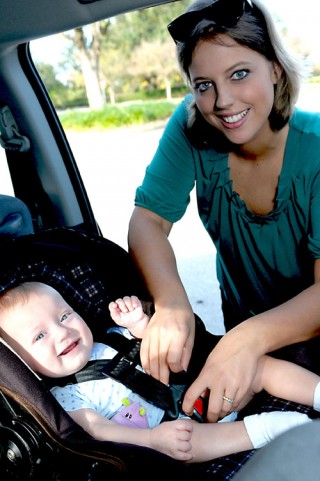Parents of young kids might be inclined to make the switch to a forward-facing car seat somewhat too early, not recognizing their child is much better protected rear-facing as long as possible.
Safety experts, including the National Highway Traffic Safety Administration (NHTSA) and also the American Academy of Pediatrics (AAP), advise that a child stay in rear-facing child car seat as long as possible and never travel forward-facing until they are a couple of years old or until they reach the highest weight or height allowed by the manufacturer of their child safety seat. This is to minimize the risk of serious neck injury and lifelong disability.
New convertible seats are available today that allow children to remain rear-facing until they weigh 30 to 50 pounds, based on the model.
Child car seats – correct installation, AAA
Benefits in frontal crashes
Riding in a rear-facing child car seat is the safest for children, but especially for infants, who would face an increased probability of spinal cord injury in a front-facing car seat in a frontal crash. Babies have heavy heads and fragile necks. In the crash, their soft spinal column can stretch, resulting in spinal cord damage if the baby is riding in a forward-facing position.
If your baby is facing forward in a frontal crash – the most common and many severe crash type – the body is secured by the straps, but the head will not be. The pinnacle is thrust forward, stretching the neck and the easily-injured spinal cord.
The SafetyBeltSafe UsaA. website cites a 2008 article in Pediatrics that children under the age of two are 75 percent less likely to killed or suffer severe injuries in a crash if they are riding rear-facing rather than front-facing. Of importance to parents would be the fact, for children one- to 2-years of age, facing the back is 5 times safer.
In the frontal crash, rear-facing car seats cradle the child’s head, torso, neck and back, spreading the crash forces. Rear-facing seats also avoid the child’s head from snapping relative to your body during a frontal crash.
Benefits in side-impact crashes
Crash field and tests experience show the head of a child facing rearward is captured by the shell of your child restraint system in side and frontal-oblique crashes. The head of a forward-facing child may be thrown forward, around, and even outside of the confines from the child restraint system’s side wings.
As outlined by field data, there are better outcomes for rear-facing children than forward-facing ones, though most child restraint systems are not designed specifically to guard children during a side-impact crash.
In Sweden, children ride in rear-facing child car seats until these are three to five years. This has substantially decreased traffic injury and death rates.
Bottom line: Don’t be in a hurry to transition your son or daughter from rear-facing to forward-facing. Although child car seats in the Usa are not designed to be used rear-facing as long as those who work in Sweden, safety experts still recommend children be secured in rear-facing car seats given that possible – at least until they are two years old.

